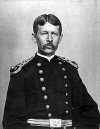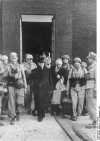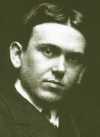 The Oslo Accords, providing for the withdrawal of Israeli troops from the West Bank and Gaza and for limited Palestinian self-government, resulted from the first direct negotiation between Israel and the Palestinian Liberation Organization (PLO). Though talks were conducted in secret in Oslo, Norway, the agreement was signed publicly in Washington, DC. It was signed in the presence of Israeli Prime Minister Yitzhak Rabin and PLO leader Yasser Arafat, yet neither signed it. Who did? Discuss
The Oslo Accords, providing for the withdrawal of Israeli troops from the West Bank and Gaza and for limited Palestinian self-government, resulted from the first direct negotiation between Israel and the Palestinian Liberation Organization (PLO). Though talks were conducted in secret in Oslo, Norway, the agreement was signed publicly in Washington, DC. It was signed in the presence of Israeli Prime Minister Yitzhak Rabin and PLO leader Yasser Arafat, yet neither signed it. Who did? Discuss
Source: The Free Dictionary
 Also known as
Also known as  Reed was an American army doctor, pathologist, and bacteriologist. He began studying the transmission of yellow fever in 1897. Three years later, he was sent to Havana, Cuba, as head of an army commission to investigate an outbreak of the disease among American soldiers. He proved that yellow fever was spread by infected mosquitoes, and, in 1901, efforts to combat an outbreak in Havana succeeded within 90 days. Walter Reed Army Hospital is named in his honor. What medical malady killed Reed?
Reed was an American army doctor, pathologist, and bacteriologist. He began studying the transmission of yellow fever in 1897. Three years later, he was sent to Havana, Cuba, as head of an army commission to investigate an outbreak of the disease among American soldiers. He proved that yellow fever was spread by infected mosquitoes, and, in 1901, efforts to combat an outbreak in Havana succeeded within 90 days. Walter Reed Army Hospital is named in his honor. What medical malady killed Reed?  A sigil is a symbol, usually composed of a complex combination of meaningful symbols or geometric figures, that has a specific magical purpose. In medieval ceremonial magic, the term was used to refer to the occult signs that were believed to represent individual angels and demons and which were used by magicians to summon and control these beings. Sigils are also commonly found in Jewish mysticism and Kabbalistic magic and are used by practitioners of what type of magic?
A sigil is a symbol, usually composed of a complex combination of meaningful symbols or geometric figures, that has a specific magical purpose. In medieval ceremonial magic, the term was used to refer to the occult signs that were believed to represent individual angels and demons and which were used by magicians to summon and control these beings. Sigils are also commonly found in Jewish mysticism and Kabbalistic magic and are used by practitioners of what type of magic?  In 1943, Italian dictator Benito Mussolini was deposed by his own government. When German forces discovered that he was being held at a ski resort in the Apennine Mountains, they launched a daring rescue. Arriving on gliders, German troops overwhelmed Mussolini’s captors and spirited him away without firing a shot. The operation was a major propaganda success for the Nazis. According to some accounts, what was Mussolini’s reply when the paratroopers told him that Adolf Hitler had sent them?
In 1943, Italian dictator Benito Mussolini was deposed by his own government. When German forces discovered that he was being held at a ski resort in the Apennine Mountains, they launched a daring rescue. Arriving on gliders, German troops overwhelmed Mussolini’s captors and spirited him away without firing a shot. The operation was a major propaganda success for the Nazis. According to some accounts, what was Mussolini’s reply when the paratroopers told him that Adolf Hitler had sent them? 
 Often regarded as one of the most influential American writers of the early 20th century, Mencken was a journalist, satirist, social critic, and cynic known as the “Sage of Baltimore,” for the city where he lived his entire life. Perhaps best remembered for his satirical reporting on the Scopes evolution trial, which he dubbed the “Monkey trial,” Mencken was frequently critical of myriad institutions. Why did the Arkansas legislature pass a motion in 1931 to pray for Mencken’s soul?
Often regarded as one of the most influential American writers of the early 20th century, Mencken was a journalist, satirist, social critic, and cynic known as the “Sage of Baltimore,” for the city where he lived his entire life. Perhaps best remembered for his satirical reporting on the Scopes evolution trial, which he dubbed the “Monkey trial,” Mencken was frequently critical of myriad institutions. Why did the Arkansas legislature pass a motion in 1931 to pray for Mencken’s soul?  According to the 1421 hypothesis, between 1421 and 1423, during the Ming Dynasty of China, a fleet of Chinese ships traveled to many parts of the world unknown to contemporary Europe, including Australia, New Zealand, the Americas, Antarctica, Greenland, and the Northeast Passage. The hypothesis is allegedly based on evidence from shipwrecks, old maps, Chinese documents, and accounts by navigators such as Christopher Columbus. Why have professional historians largely dismissed this hypothesis?
According to the 1421 hypothesis, between 1421 and 1423, during the Ming Dynasty of China, a fleet of Chinese ships traveled to many parts of the world unknown to contemporary Europe, including Australia, New Zealand, the Americas, Antarctica, Greenland, and the Northeast Passage. The hypothesis is allegedly based on evidence from shipwrecks, old maps, Chinese documents, and accounts by navigators such as Christopher Columbus. Why have professional historians largely dismissed this hypothesis?